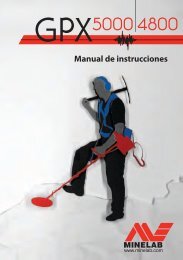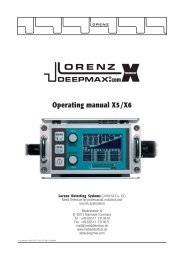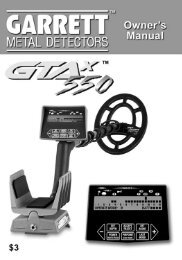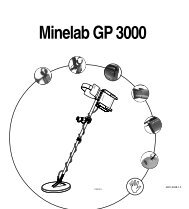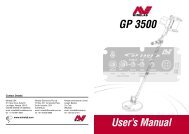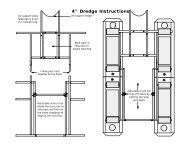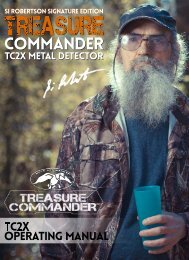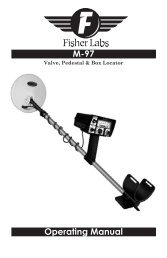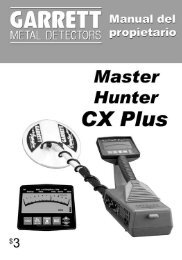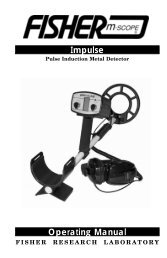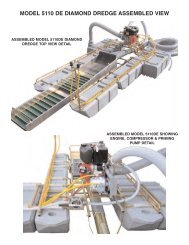operating instructions: treasure ace 100 - Garrett
operating instructions: treasure ace 100 - Garrett
operating instructions: treasure ace 100 - Garrett
You also want an ePaper? Increase the reach of your titles
YUMPU automatically turns print PDFs into web optimized ePapers that Google loves.
sound erratic. The following explains the various Trash Elimination Settings as shown by<br />
the icons pl<strong>ace</strong>d around the control knob.<br />
In the TRASH Range most small rusty iron will be eliminated just above the All-Metal setting.<br />
Salt water is eliminated just below the bottlecap icon.<br />
At the Bottlecap icon, foil, nails and larger rusty iron, will be eliminated.<br />
At the Pulltab icon, pulltabs, bottlecaps, foil, nails and rusty iron will be eliminated.<br />
Nickels, rings, and many foreign coins and tokens may also be eliminated at this setting.<br />
Test typical trash items before <strong>operating</strong>.<br />
Recovery/Pinpointing:<br />
Recovering a target is accomplished first by Pinpointing.<br />
Pinpoint targets by drawing an imaginary “X” on the ground with the searchcoil at the pl<strong>ace</strong><br />
where the maximum sound occurs. You will notice that the searchcoil cannot be held<br />
motionless above the target, the searchcoil must be moving slightly to detect the targets<br />
location.<br />
The next step in recovery usually involves digging. Always make as small a hole as possible. It<br />
is quicker, requires less digging, and is easier to fill. And, you should always fill your holes.<br />
MAINTENANCE<br />
Always remember that your metal detector is a sensitive electronic instrument. It is built to<br />
withstand rugged treatment in the outdoors. Use your <strong>Garrett</strong> detector to the fullest extent<br />
possible, and never feel that you have to baby it. Yet, always protect the detector and<br />
handle it with reasonable care.<br />
Try to avoid temperature extremes as much as possible, such as storing the detector in an<br />
automobile trunk during hot summer months or outdoors in sub-freezing weather.<br />
Keep you detector clean. Always wipe the housing after use, and wash the coil when<br />
necessary. Protect your instrument from dust and sand as much as possible.<br />
Your searchcoil is submersible. The control housing is not! Never submerge the control<br />
housing and always protect it from heavy mist, rain or blowing surf.<br />
Disassemble the stem and wipe it clean after use in sandy areas.<br />
When storing longer than about one month, remove batteries from the detector.<br />
REPAIR SERVICE<br />
In case of difficulty, read this Owner’s Manual again thoroughly to make certain your<br />
detector is not inoperable needlessly. Your dealer may also be able to offer advice.<br />
When your detector must be returned to the factory for service, always include a letter that<br />
describes its problem as fully as possible. Before you return your detector to the <strong>Garrett</strong><br />
factory, make certain:



